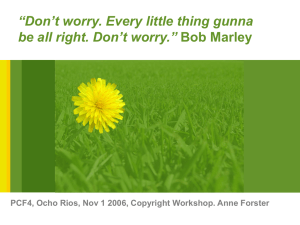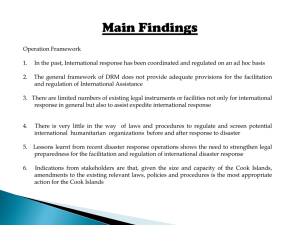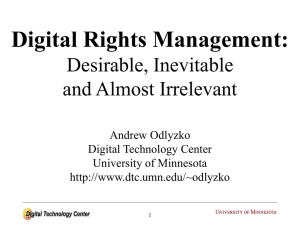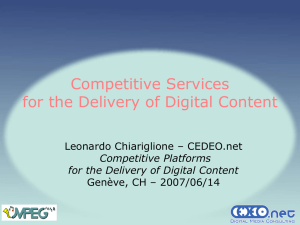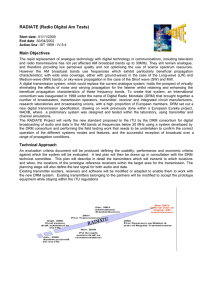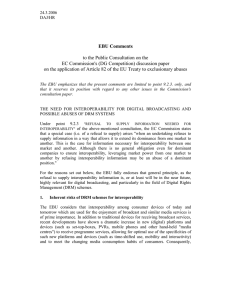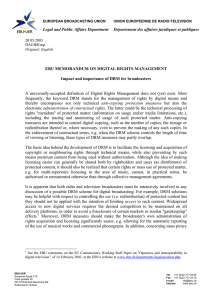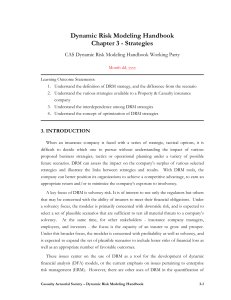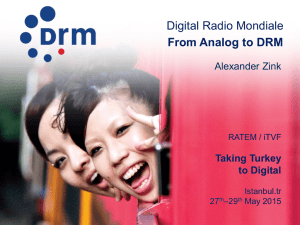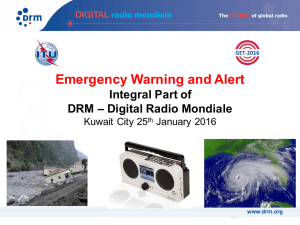Legal Issues: IPR and DRM
advertisement
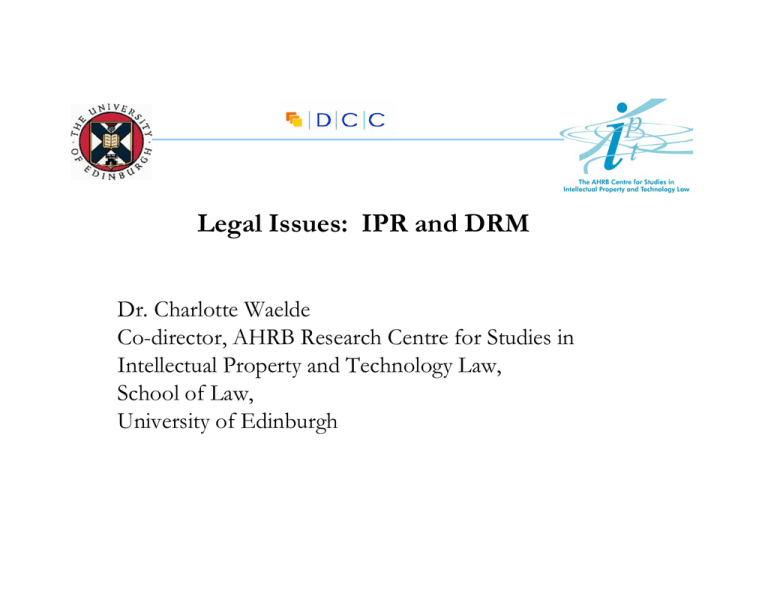
Legal Issues: IPR and DRM Dr. Charlotte Waelde Co-director, AHRB Research Centre for Studies in Intellectual Property and Technology Law, School of Law, University of Edinburgh Legal Issues: IPR • Copyright: ownership; exploitation; enforcement • Moral Rights: integrity; attribution • Database right: ownership; exploitation Legal Issues: Copyright ownership Copyright: protects literary, dramatic, artistic, musical works, films (author works). Also derivative works: sound recordings, broadcasts, computer generated works Author: the person who creates the work Owner: the person who creates the work except where an employee acts in the course of employment – owner is employer Content: example from JORUM • • • • • • • • • Simple materials (C) Excel spreadsheet with data for lab exercise Word document with lesson plan, or schedule of work (C) Images (C) Powerpoint presentations (C) More complex materials (C) 3D Flash animations illustrating complex concepts e.g. chemical, geological etc (C) Learning objects, containing a number of files, some of which may provide student interactivity (C) Virtual objects (C) Legal Issues: copyright ownership Copyright ownership in HEIs Question: who has the ‘right’ to give permission to allow use of works in collaborative teaching and learning initiatives? Custom and practice: HEIs do not assert rights to income streams? To copyright? Build a database with works ‘donated’ by individuals and then… After complaints were received Cardiff University withdrew a clause in a proposed new employment contract pointing out that the University owned lecturer’s lecture notes and that they should be handed over to the university when staff leave. (Times Higher Educational Supplement, 27 July 2004) Vagueness over ownership is not helpful in collaborative ventures Legal issues: copyright exploitation • • • • • • Copyright comprises a bundle of exclusive rights: To copy a work To issue copies of the work to the public To rent or lend the work to the public To perform, show or play the work in public To communicate the work to the public To make an adaptation of the work Authorisation required for each of these rights. All relevant (except possibly rent or lend) to collaborative education and training ventures Authorisation can be by way of assignation or licence – exclusive/non-exclusive; extensive/limited. Terms needed for licensing in rights – to the database; and for licensing out rights – to the user. Legal Issues: copyright enforcement Infringement of rights of those who supply works: clear licences, DRM, risk management Infringement by third parties: DRM can help with enforcement, but beyond that? Copyright: moral rights UK: Integrity: a right not to have a work subject to derogatory treatment (objective test in UK) - can be waived. Causes much concern. Note: community wants as many rights for re-use and re-purposing as possible (Moira Massey) Attribution: a right to be identified as the author - requires to be asserted Weak rights in the UK – stronger in Continental Europe Copyright and moral rights: The perfect world for creating teaching and learning materials for use in a collaborative environment? Assignation of copyright from the owner Moral rights waived Incentive for the contributor? Unlikely in reality – so… The database right A database is a collection of independent works, data or other materials arranged in a systematic or methodical way and individually accessible by electronic or other means Collections of teaching and learning materials fall under this heading – e.g. JORUM The database right: ownership and rights Ownership lies with the maker: the person who invests (qualitatively or quantitatively) in the obtaining, verification or presentation of the contents. Right is to prevent unauthorised extraction (transfer of contents) and re-utilisation (making available e.g. by distribution of copies etc.) of the whole or a substantial part of the contents. The database right: why does it matter? The content of a database, even where the copyright is ‘cleared’, cannot be exploited without permission of the maker of the database. Tiers of ownership within the one product need to be carefully managed. Report prepared for JISC on the best approach to adopt in the use of DRM in research and education. For a copy of the final report see http://www.intrallect.com/drmstudy/DRMFinalReport.pdf

